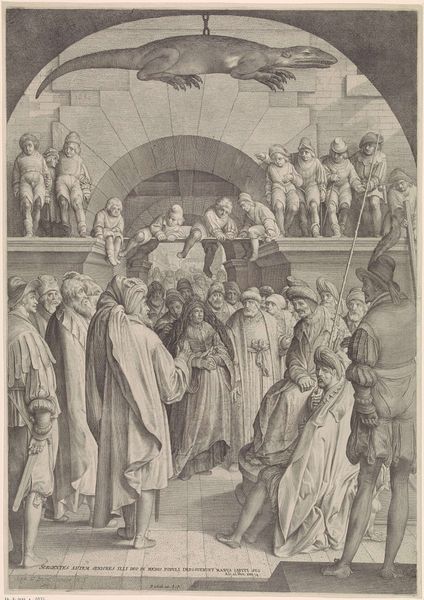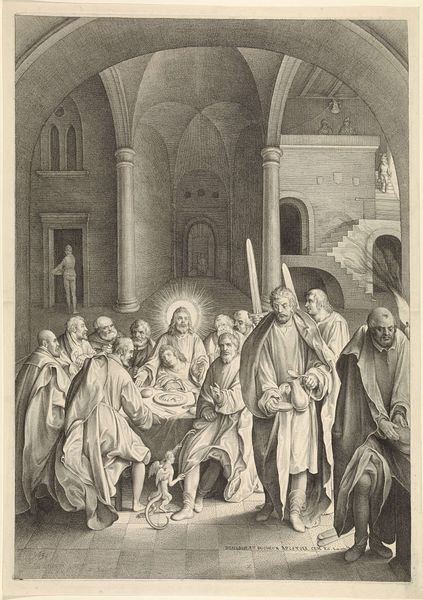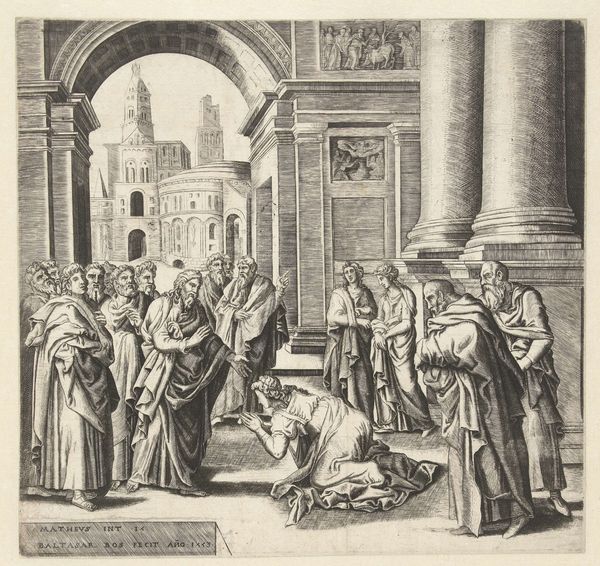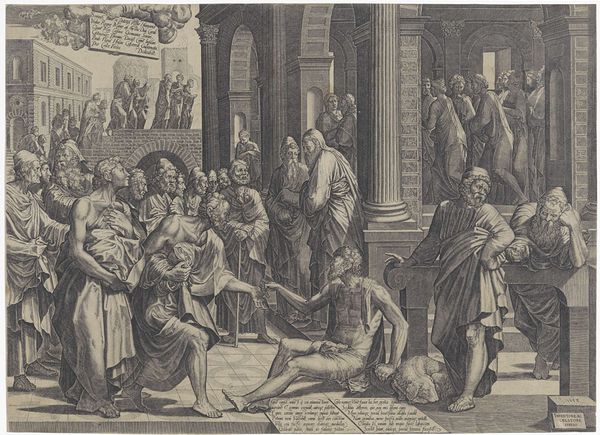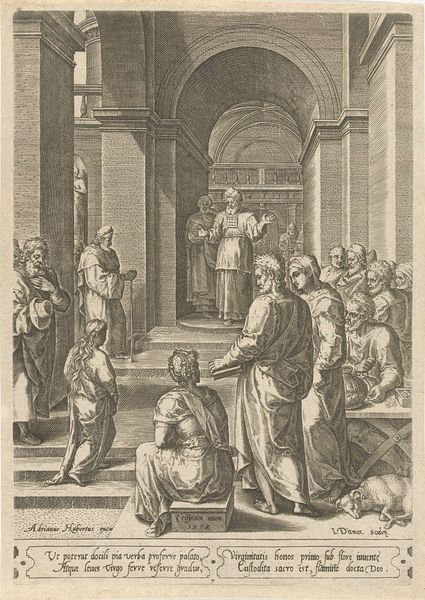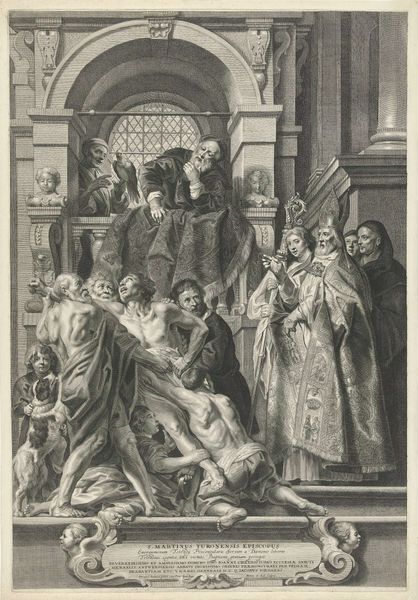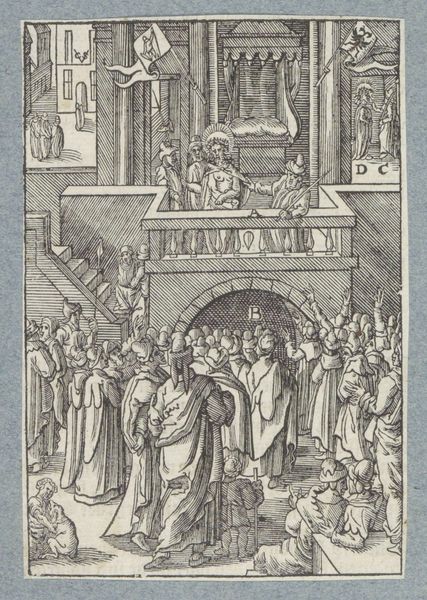
print, engraving
#
baroque
# print
#
old engraving style
#
figuration
#
portrait drawing
#
history-painting
#
engraving
Dimensions: width 468 mm, height 656 mm
Copyright: Rijks Museum: Open Domain
Editor: This print, “Christ Before Caiaphas,” was created in 1632 by Nicolaes de Bruyn, now hanging in the Rijksmuseum. I’m struck by the grand architecture, almost overwhelming the figures. How does the setting affect the way we perceive this biblical scene? Curator: That’s a perceptive observation. Think about the public role of religious art at this time. The imposing architecture isn't just a backdrop; it's a deliberate staging. Consider how the Baroque style, with its emphasis on grandeur and drama, was often employed by institutions—both religious and secular—to assert authority. What socio-political power dynamics do you see at play in how the figures are arranged within this architectural space? Editor: Well, Christ is placed very low, almost at the center but near the foreground, seemingly vulnerable amidst all this architectural might. The figures surrounding him appear to be of higher status due to where they stand. It really pushes a political point, it seems like, with the visual dynamics. Curator: Exactly! And how might the choice of engraving as a medium influence our understanding of this image? Remember, prints were relatively accessible compared to paintings. What did widespread reproduction mean for religious imagery? Editor: Since printmaking allowed for easier and cheaper dissemination, perhaps it aimed to spread a specific message more broadly, potentially influencing public opinion? It could be a kind of religious or even political propaganda of the time. Curator: Precisely. The print becomes an active agent in shaping public perception, extending the reach of the narrative far beyond the walls of a church or palace. Now, notice the deliberate lines of perspective…where do they seem to lead? Editor: Towards the back of the architectural space...towards some sort of shrine maybe? All the space leads towards something the viewer can't see clearly. It feels less about truth and more about mystery...or a quest for a concept. I never looked at prints in this context before, and seeing its relationship to the public is fascinating. Curator: And I'm now thinking more about how the physical scale of the print plays into this narrative and impacts a viewer's experience of something this widespread! Thanks for your thoughts.
Comments
No comments
Be the first to comment and join the conversation on the ultimate creative platform.
